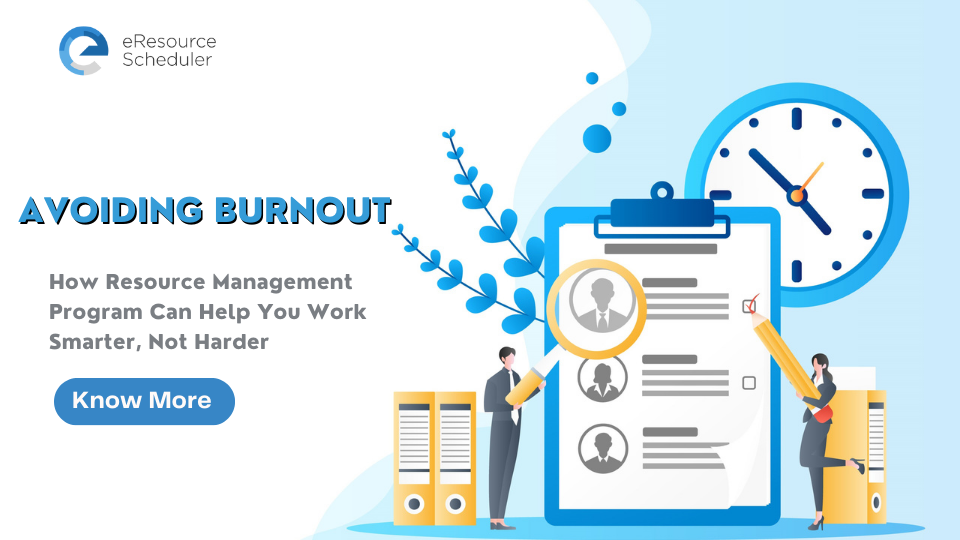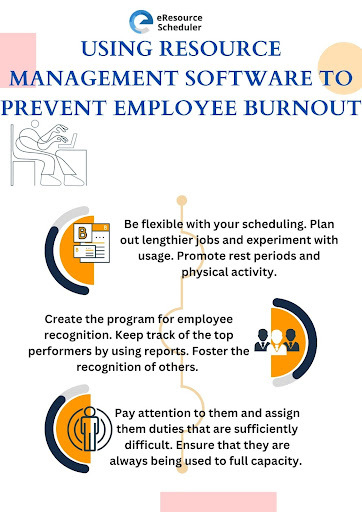
According to the World Health Organization, the term "burnout," which refers to chronic workplace stress, is now a recognized medical condition. To combat burnout, organizations need to invest in effective resource management program to ensure employees are allocated efficiently and effectively. A robust resource management program can help reduce stress levels and increase job satisfaction, leading to a happier and more productive workforce.
Employee burnout is a well-known problem in today's companies. According to surveys and research, one-third to half of the workforce satisfies the medical definition of burnout, as stated by the American Institute of Stress. Everyone has decried the epidemic of workers who don't care anymore, but treating it has been challenging. Many businesses view it as a personal or talent issue rather than a business problem that can be resolved with better strategies.
For the sake of employee retention and general well-being, burnout in the workplace must be reduced and prevented.
This blog offers helpful advice on preventing employee burnout, reducing workplace burnout, and managing burnout in the workplace.
Key Conclusion
Burnout and workplace stress are prevalent. They don't simply happen in businesses with bad management or dysfunctional cultures but in all kinds of enterprises. Work overload, job conflict, high degrees of ambiguity, pressure from management, lack of support, and feedback are some of the most typical reasons for workplace burnout and stress.
Highly engaged employees may experience burnout when they experience a drop in their well-being due to pressures at work or at home that are uncontrolled. Additionally, it is "contagious" and can impact an entire team or seep into people's personal lives.
Burnout can be avoided. Employers can more readily grasp how to prevent employee burnout if they have excellent support and are aware of the factors that contribute to it.
Employee burnout has different meanings depending on the context, but at its heart, it has to do with the stress employees go through because of their jobs. Only lately has burnout been acknowledged as a global medical concern and a diagnosis.
Here are three of the most prevalent employee burnout symptoms:
1. Feeling weary and devoid of energy.
2. Negative or cynical feelings regarding one's employment and a mental detachment from it.
3. Suffering from a sense of ineffectiveness and doubting one's efforts.
Have you ever noticed that when an employee is physically and emotionally affected, they begin to doubt their professional successes and the basis of their personal identity? According to what we discovered, it is best to consider any notion of burnout solely in the context of one's occupation rather than attaching it to any other aspect of one's life.
Although employee burnout symptoms are usually associated with working environments, who knows how many skeletons have been unearthed? In all probability, leaving a burnout employee unattended is not the way to go for a people-oriented organization, and it can have much worse effects for everyone concerned in the long run.
Time is of the essence in our fast-paced environment, where demands are quite high. It might be challenging to determine when we are working hard or burning out.
There is undoubtedly a fine line. It all comes down to how we cope and the coping talents differ. Some people can cope with greater stress and less sleep better than others. It all comes down to recognizing our surviving capability and when we have exceeded it.
There is just so much we can accomplish and how far we can travel when we are running on empty, whether we immediately identify burnout or not. It's the same as driving a car without gas. Without fuel, we can only get far before the car abruptly stops.
Because of this, paying attention to the warning signs and taking a break before placing yourself in danger is essential.
So, Let's Find the Solution.
Work smarter, not harder.
It's a widely held belief that productivity is correlated with long hours. This is a complete fabrication. The fact is that when we constantly work in overdrive and are probably getting nowhere fast, so many of us end up exhausted, irritated, and formally "burnt out."
Try eResource Scheduler. All we need to do to get the desired outcomes and avoid the various paths to burnout is locate the best resource management software for our team. It truly will change an organization's health.

We can now move forward with eradicating burnout in the team for good because we have identified the symptoms and the types of employees who are most susceptible to experiencing them. The recommendations we've provided here will help you use resource management program to stop burnout before it even affects your staff.
Learn about how can eResource Scheduler help teams avoid employee burnout?
Planning projects that are inbound requests, as well as those that are scheduled, must consider our team's complete workload. Our project managers can easily allocate work hours to best suit each team member's capabilities and availability.
eRS resource management program makes it simple to match the right resources to the right projects.
Our project managers may obtain a complete, real-time perspective of their teams with the aid of eRS at this crucial planning stage. The amount of time needed to finish the task might be plotted by management. This guarantees the right allocation of resources at each step of the project.
The eRS resource management program offers complete visibility over the workload of the entire team, even down to the level of each team member. Managers may immediately see who is working on what assignment and how long it will take by viewing each team member's schedule and projects. This knowledge of team availability then aids in creating plans that avoid conflicts and make the greatest use of available resources.
While it may be tempting to start initiatives right away, starting them without the necessary resources delays the completion date. That is longer than it would be if managers had appropriately allocated resources during the planning phase. A resource forecasting tool like eRS provides us with all the planning data required to support teams in launching projects at the appropriate time and with the necessary resources.
eRS flexible resource allocation enables project managers to distribute work hours based on each team member's capabilities and availability. Allow team members to collaborate and avoid project delays caused by unequal workloads.
Several studies have shown that taking on too much work and multitasking lowers productivity.
Once we've mastered resource planning using eRS, we can look at optimizing efficiency with modules like Resource Scheduling and assigning work by job role.
We need to move beyond the question of "do we have enough people to complete this task?" to "How to maximize productivity?" Balanced workloads always improve long-term performance, productivity, enjoyment, and creativity as well as completing projects faster.
eRS helps teams to collaborate and avoid project delays, which lead to excessive operating expenses and business inefficiency. With an intuitive drag-and-drop interface, you can easily reprioritize projects to keep them on track and reduce unexpected operational expenses even when circumstances change. Make real-time changes to task duration, work necessary, and assignees, or allocate tasks from backlogs when the team is ready to take on more projects.
Whatever the plan, things are certain to crop up: urgent demands, changed goals, and unexpected sick days. Executives can avoid employee burnout by adjusting timetables and reassigning work according to changing business demands and goals.
The stressor in a workplace stress study was "bottlenecks and waiting on others." When a team hits a snag, being able to react swiftly helps project managers move the project forward quickly, boosts general team morale, and saves them from burning out on work that isn't moving forward.
eRS, powered by workload visibility, assists leaders in agilely prioritizing and reprioritizing work, preventing projects from becoming caught in a limbo of dissatisfaction. Managers may immediately identify and eliminate bottlenecks by centralizing all task information, creating accountability, and empowering team communication.
The use of eRS resource management program makes it easy to monitor how much time is spent on various jobs and to enhance resource projections continuously. So that managers may compare how much effort was planned vs. how much time was actually required for each particular assignment, keep work, and track work in one location.
With the help of eRS Timesheet features, managers may automate time-consuming administrative procedures and produce reports that enhance processes.
Leaders can design customized reports and view the scheduling on Gantt charts. They can monitor team effectiveness and improve estimates by comparing the planned effort to the actual time spent. This increased insight enables executives to optimize the resources utilization and planning in the future. It also allows teams to see the impact of their effort and how it may be improved.
The percentage of clerical errors committed by happy employees is 26% lower, burnout is 79% lower, and churn is 61% lower than that of dissatisfied employees. Whether you're ready to add an eRS resource management program to your toolbox or just want to learn more, use this questions checklist to start incorporating employee centricity into your team:
Are you updating resource allocation based on a report expected vs. actual effort?
Also read:
8 biggest mistakes made by small business owners & ways to fix them
The art of task prioritization at work: making sure deadlines are met
Timesheet app for efficient resource utilization
9 best staff scheduling applications for 2024
Resource planning tool | Accelerate your business to the next level
Plan Smarter. Schedule Faster.
Join thousands already using eResource Scheduler to align teams, time, and tasks seamlessly.